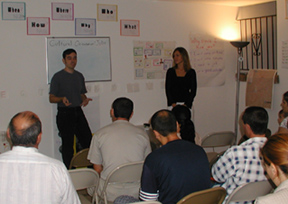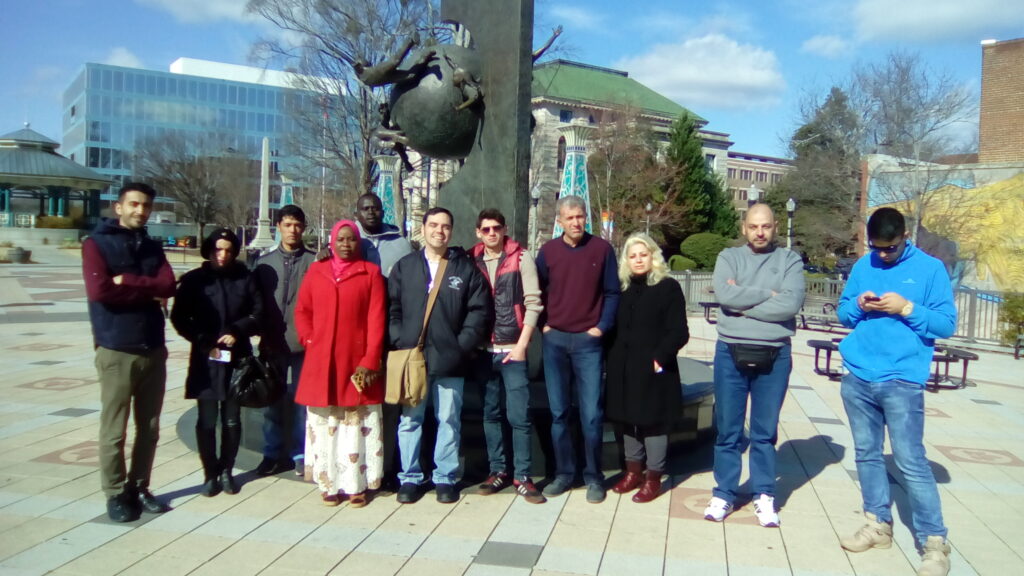Cultural Orientation

As I stayed longer in my job, I began to specialize in the field of cultural orientation. Living life in a new country successfully is not an immediately evident proposition. People need guidance as to the expectations and customs of their new homeland as well as knowledge of what elements of their own culture may complement or conflict with their new surroundings. Refugees must learn and adapt especially quickly since they have very little network and yet must begin making their own way financially very soon after arrival. An agency has to present culturally-appropriate and useful information as we first meet with new refugees to prepare them for their new life. It is thus critical to focus on the most immediate problems for orientation and find ways to help people understand the basic necessities despite the overwhelming transition they are facing.
My background in cultural anthropology helped prepare me for this task as it gave me an understanding of how to observe behaviors and assess cultural barriers and ways to overcome them. Most of the time, I would gain insight into our clients’ lives from daily interaction with them in their homes and other local environments. As I got to know multiple families, I became able to recognize not only individual needs but trends in the community . I then could then use that knowledge to adapt the content and manner of my interaction with other arrivals from the same area. While much of my time as a case manager was spent on individualized orientation, I eventually transitioned to be the cultural orientation trainer and manager at our office.

practice shopping in class
The group training and orientations at my officebegan in earnest in 2003 when all the refugees agencies of Atlanta came together to create a successful round of cultural orientation classes for newly arriving Somali Bantu refugee clients. These classes (highlighted in the June 2004 edition of Refugee Reports) included information on life in America, customs, community, laws, expectations, and other important topics. In the years after, I recreated these kinds of classes for the Russian-speaking population of Meskhetian Turks who came later but had to tailor the classes to a much different background both in terms of education level and culture. These transitions continued as the populations arriving changed again several times over.

By the time I became the primary cultural orientation trainer at our office, I had developed much of my own style of gaining rapport with students of different backgrounds and relating the information to their situations. I designed a rotating class schedule in our office that effectively used our interpreters’ time and fit around the other scheduled needs of resettlement. I not only got to teach classes but to take groups out for practical lessons on the use of transportation or accessing the public library. At the same time, the number of outside resources available to assist also grew: specialized curricula and learning objective indicators, guides on cultural issues for specific refugee groups, online trainings in adult learning. I was constantly on the look-out of ways to increase both my capacity to instruct as well as to make the time relevant for the families.
Though my time at one agency came to an end, I am thankful that I was soon able to continue the same role at another. With the advent of COVID and general changes in society, a lot of the focus turned to digital inclusion and providing training using remote methods in addition to ongoing regular classes. My work at Education Coordinator includes training in not only cultural orientation for new arrivals but also skills building for refugees and other categories of immigrants in special programs like youth career programs, economic empowerment programs, and women’s groups.
| While our work with orientation for families is key to their local integration, it is also interesting to bear in mind that it is actually a second step in a process that began back in the refugee camps during which refugees also receive cultural orientation to prepare them for their first days in America. I was fortunate enough to see this in action back in 2003 when I visited Kenya as part of a Cultural Orientation Trainer’s Exchange program. There I saw first hand the lives of refugees in the camp and the work to prepare them for the massive transition to their new life. |